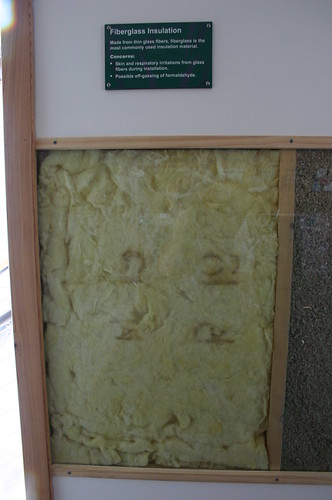Home insulation is necessary for keeping the living space warm during winter seasons and cool during summer. There is an array of options to choose from but the insulation type that will best suit your home depends on the climate of your locality. It's also important to note that the standard unit of insulation is R-value, which basically shows the ability of a material to retain heat.
A high R-value signifies effective thermal resistance (insulation). As such, if your locality has cold climate, you'll require an insulation material with a high R-value so as to maximize energy efficiency. Here is a look into the different insulation materials, their benefits and dangers. Read on
Types of Home Insulation
Fiberglass
This is the most common material used for home insulation is fiberglass. The insulation comes in the form of large rolls known as batts, and is installed between wall joints and studs. It has an R-value of approximately 3.2 per inch. One of the greatest facets of fiberglass insulation is its inexpensive nature and the fact that it is fire-resistant and can thus protect you against fire damages. However, fiberglass doesn't have the ability to stop heat transfer through radiation. Again, fiberglass insulation has been associated to several health concerns especially if it's installed inappropriately.

Foam Board Insulation
Foam board insulation can be made of polystyrene, polyurethane or polyisocyanurate. The material is often sprayed onto the surface of the building or even better in the crevices. The thermal resistance of foam board falls between 4.5 and 6.5 per inch thus a very good insulation material for houses in cold weather conditions. additionally, foam is easy to install, has less irritation cases and can be installed on the exterior to offer additional insulation. However, foam insulation has negative effects on the environment and can be hazardous when inhaled.
There are other numerous types of insulation but the aforementioned are the most common types especially when it comes to home insulation. Insulation can benefit you in a number of ways other than making your home comfortable space. Make sure you find the right installers for your home improvements in Perth.
Cellulose
Cellulose insulation is simply shredded paper often manufactured from recycled newsprint. Installation is done by spraying moistened paper pulp between wall studs and into wall joints. It has an R-value of 3.2 per inch and is highly resistant to airflow and temperature fluctuations. One of the benefits of cellulose is its eco-friendly nature, it's insect and rodent resistant properties and the fact that it has no adverse effects on human health. However, cellulose can trap moisture and thus reduce its thermal resistance. Again, it's manufactured from recycled paper and this can make your house susceptible to fire.

Cost Savings
Home insulation can help you living space stay warm or cool and thus reduces over-dependence on air conditioning units. This translates to reduced energy consumption, allowing you to save on electricity bills.
Noise Reduction
Insulation can help you reduce noise in your living space. It dulls the outside noise, noise between rooms and noise between floors. As such, you can study or sleep peacefully without the disturbance of external noise.
There are other numerous benefits including value addition to your property, makes your properly fire and pest resistant and reduces rain penetration. Whether your home is new or old, it pays to insulate it.









